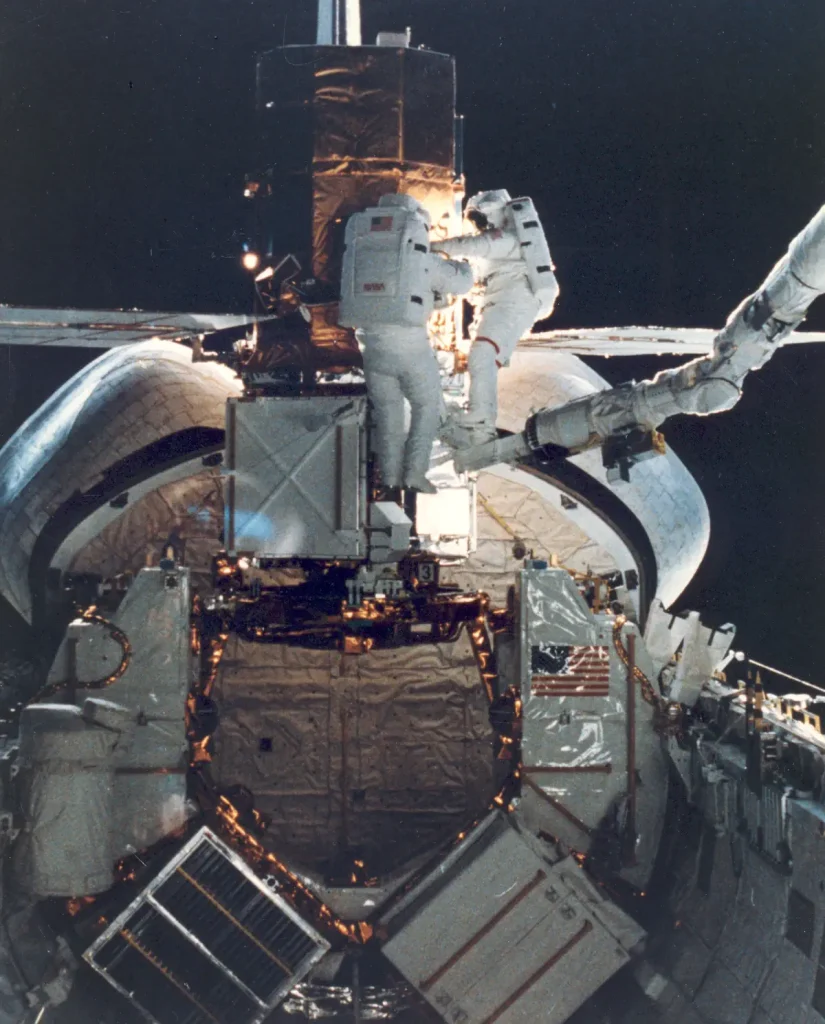The first orbiting satellite to be repaired in space was NASA’s Solar Maximum Mission, which launched on February 14, 1980, to observe solar flares. Just a few months later, in November 1980, one of the satellite’s altitude control fuses failed. It was put in standby mode, and it remained so until Space Shuttle Challenger [STS-41-C] eventually rendezvoused with it on April 11, 1984. The crew of the STS-41-C mission successfully performed the first in-space satellite repair.
After failing to carry out work in space, the satellite was pulled into the shuttle’s cargo bay where astronauts carried out maintenance work. This maintenance added five more years to the satellite’s service life.
The mission ended on December 2, 1989, when the spacecraft re-entered the atmosphere and burned up over the Indian Ocean.
April 11 story of what happened this day in Science, Technology, Astronomy, and Space Exploration history.
Solar Maximum Mission
Launched on February 14, 1980, the Solar Maximum Mission satellite (also known as SolarMax) was specifically engineered to explore solar activity, with a focus on solar flares. It was the first satellite constructed using the Multimission Modular Spacecraft bus, which was created by Fairchild Industries. This same platform was subsequently utilized for the development of Landsats 4 and 5, as well as the Upper Atmosphere Research Satellite.
The first in-space satellite repair
The Solar Maximum Mission satellite encountered a significant setback in November 1980 when an attitude control malfunction left it inoperable. As a result, the satellite was forced into standby mode until it was repaired by a subsequent Shuttle mission [STS-41-C, Space Shuttle Challenger] on April 11, 1984.

Despite this initial setback, the repaired Solar Maximum Mission satellite continued to make significant contributions to our understanding of solar phenomena. For example, it was responsible for capturing the first images of a solar flare’s magnetic field and measuring X-ray and ultraviolet emissions from the Sun. The satellite also helped researchers to understand the link between solar flares and coronal mass ejections (CMEs), which can have a significant impact on space weather and technology on Earth.
In addition to its scientific discoveries, the Solar Maximum Mission satellite also played an important role in the development of satellite technology. The Multimission Modular Spacecraft bus on which it was based became a popular platform for future satellite missions, due to its flexibility and adaptability.
April 11 in Science, Technology, Astronomy, and Space Exploration history
- 1986: Halley’s Comet made the closest approach to Earth
- 1984: The first in-space satellite repair was performed
- 1970: Apollo 13, the seventh crewed mission in the United States Apollo space program and the third meant to land on the Moon was launched.
Sources
- The Solar Maximum Mission on the NASA website
- STS-41-C on Wikipedia
- Solar Maximum Mission on Wikipedia
- Moon Landings: All-Time List [1966-2025] - February 2, 2025
- What Is Max-Q and Why Is It Important During Rocket Launches? - January 16, 2025
- Top 10 Tallest Rockets Ever Launched [2025 Update] - January 16, 2025
